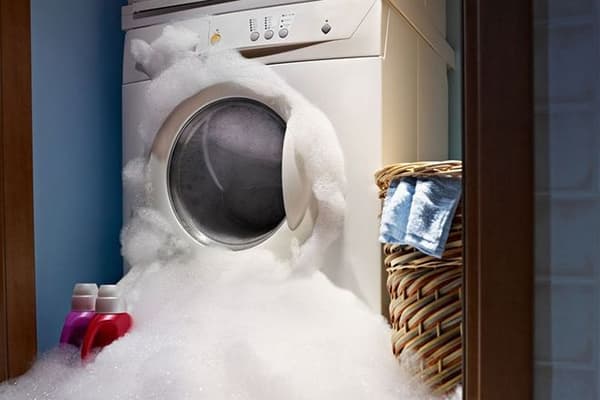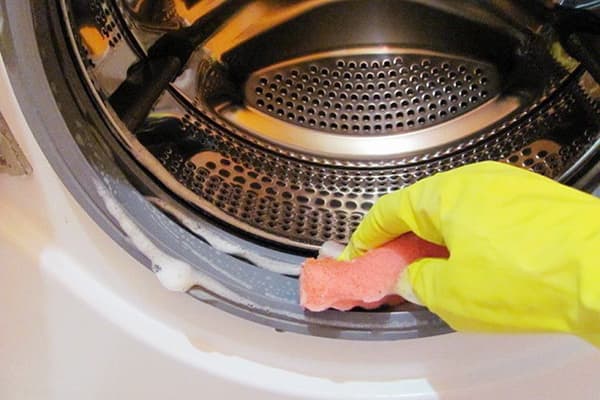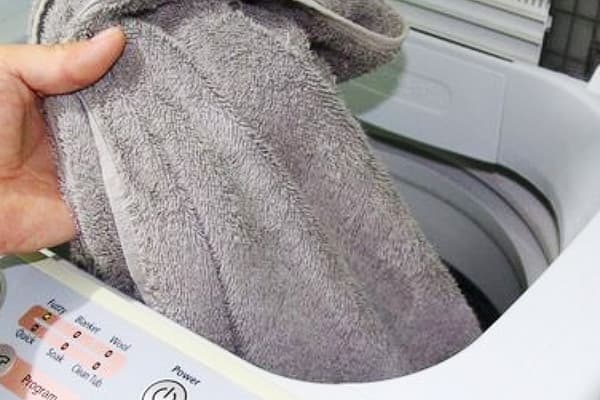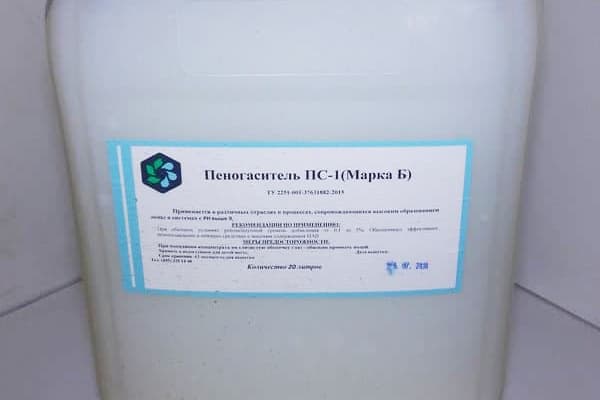Foam party: can you wash the shampoo in the washing machine?
You cannot wash with shampoo intended for hair either in activator-type machines or in automatic machines. This product “works” on a completely different principle - not like special powders and gels. Therefore, shampoo can cause damage to both clothing and the device itself.
However, in recent years, shampoos designed for washing down jackets, sleeping bags and other things filled with natural down have appeared on the market. In the case of them, the opposite is true - washing your hair is not recommended, but you can pour it into the machine without risk to its performance.

Likely consequences
The scenario in which events will develop after washing with regular shampoo depends on several factors:
- Amount of shampoo. The more it is, the more abundant the foam cap will be and the higher the likelihood that the machine will fail.
- Foaming degree. Special substances are added to the shampoo that help produce dense and persistent foam. This is necessary for high-quality degreasing of hair and removal of “adhered” contaminants. However, during washing, such foam can seep into the electronics compartment and interfere with its operation.
- Car load. The less stuff there is in the tank, the more space there is for foam. Accordingly, there is a chance that its level will not reach a critical level.
The first consequence, as a rule, is the release of foam through accessible openings (for example, a detergent compartment). Most washing machines in the budget and mid-price segment do not have a very good sealing of the hatch, so another stream of soap bubbles rushes through it onto the floor.
If you do not stop the wash at this stage, the foam will penetrate into the body of the machine - where all the sensors, cables and motor are located. In the best case, after this the security system will work and the device will turn off automatically; in the worst case, a short circuit will occur, the heating element or motor will burn out.
Repairing a washing machine damaged by a foam flood will cost approximately the same amount as buying a new one, and further operation without inspection by a specialist will be fraught with risk to life.
Instructions for saving the washing machine
To minimize the consequences and give the car a chance to live, you should drain the water from the tank immediately after turning it off. Depending on the device model, this can be done in several ways:
- through the main or emergency drain hose, stretching it across the floor and lowering the free end into the basin;
- through the hatch - the car should be tilted back slightly, open the door and scoop out the water;
- through the drain filter;
- through the drain pipe (this method is resorted to only if the previous three turned out to be impossible).
During manipulations, the plug must be removed from the socket. You can learn about all the nuances of emergency water drainage from the instructions for the machine.
After the tank is empty, you should remove the back cover of the washing machine and carefully inspect the parts. Pay special attention to the board, since it is the one that controls all processes.If traces of water or foam are detected, you need to wipe the board with pure medical alcohol - firstly, it will wash away the remaining alkali, and secondly, it will dry the surface and inhibit the formation of corrosion. They do the same with other electronic “stuffing”; they process the connection points of electrical cables.
When everything is ready, you need to immediately call a technician or take the machine to the service yourself.
Other reasons not to shampoo
As a product intended for hair, shampoo contains not only surfactants, but also caring components (oils, keratin, silicones and other polymers). Some of them perform a temporary protective function, while others do not rinse out of the fabric, enveloping each thread and attaching to it. As a result, things lose their attractive appearance and quickly become unusable. Products made of wool and polyester are most resistant to the negative effects of shampoo.
In addition, shampoo is not able to cope with complex stains. Stains from juice, coffee, oil, blood, wine, sauce will not disappear after such a wash; they will become even more ingrained into the fabric thanks to the polymers mentioned above. Unpleasant odors will also remain in place.
Lifehack
To combat increased foaming, there are special means - defoamers. They are present in minute quantities in any shampoo, but much more is added to washing gel.
If a person, for any reason, wants to wash with hair shampoo, and not with specialized products, he needs:
- Find on the Internet a company that conducts small-scale wholesale trade in chemical components for soap making, and purchase a defoamer intended for liquid detergents.
- Add the amount of defoamer recommended by the manufacturer to the shampoo. As a rule, this is 0.3–0.5%. Experimentally, you can find the optimal proportion for a particular shampoo, since they all foam differently.
- When washing, be sure to use anti-scale agents and regularly care for the machine.
In order for the washing machine to faithfully perform its functions for many years, you should fill it only with certified laundry detergents that have a hatch-shaped icon or the “automatic” mark. And if such a need arises, shampoo should be washed by hand.



Horror! I would never put shampoo in my favorite Whirlpool! This is tough! She’s not picky about powder, but not that much!
My wife once poured shampoo into the machine. She needed to wash something urgently, but the powder had run out. Okay, I was home. He comes running into the room screaming, foam coming out of the machine. I drained the water in time, checked everything, the boards did not have time to get wet.